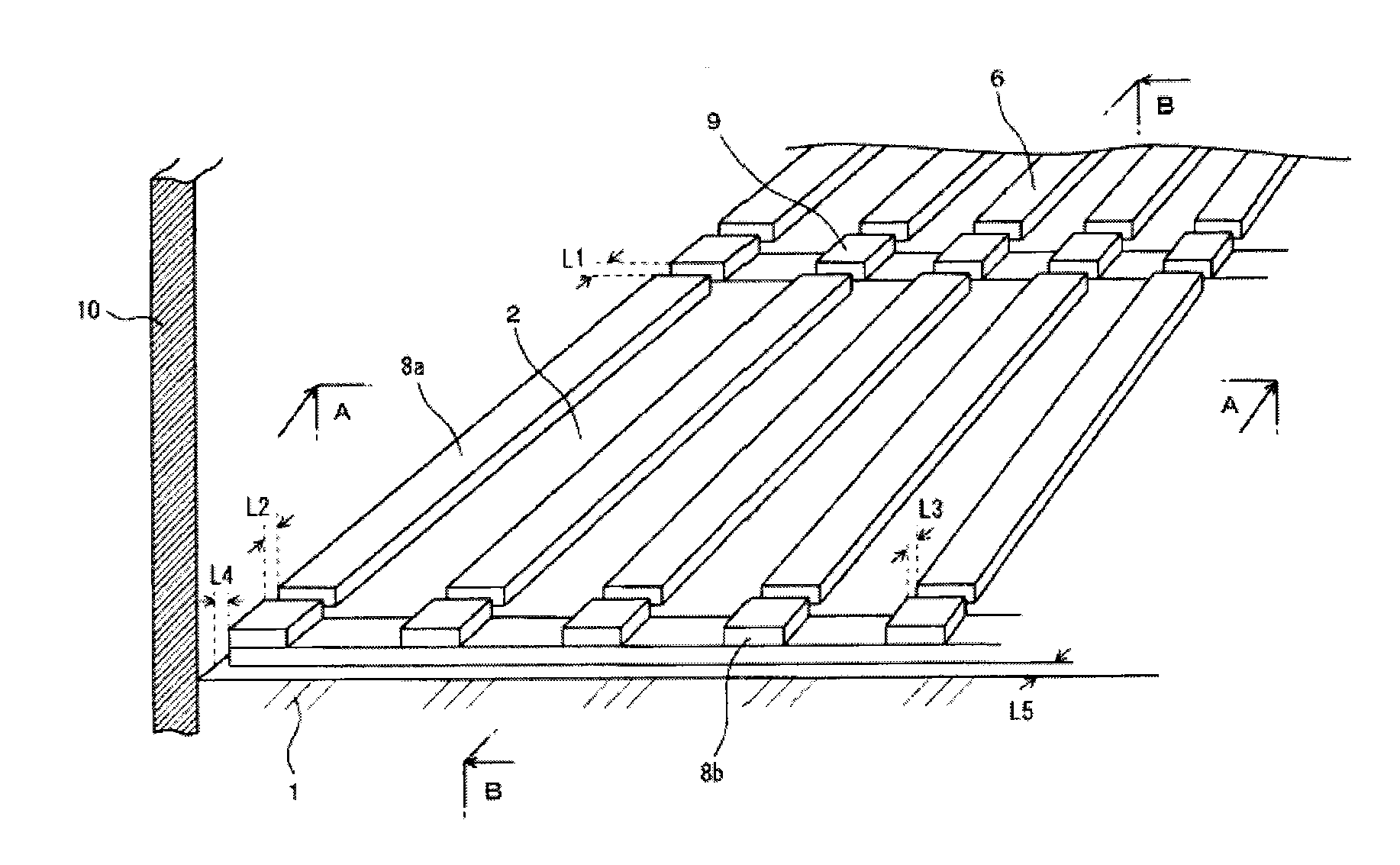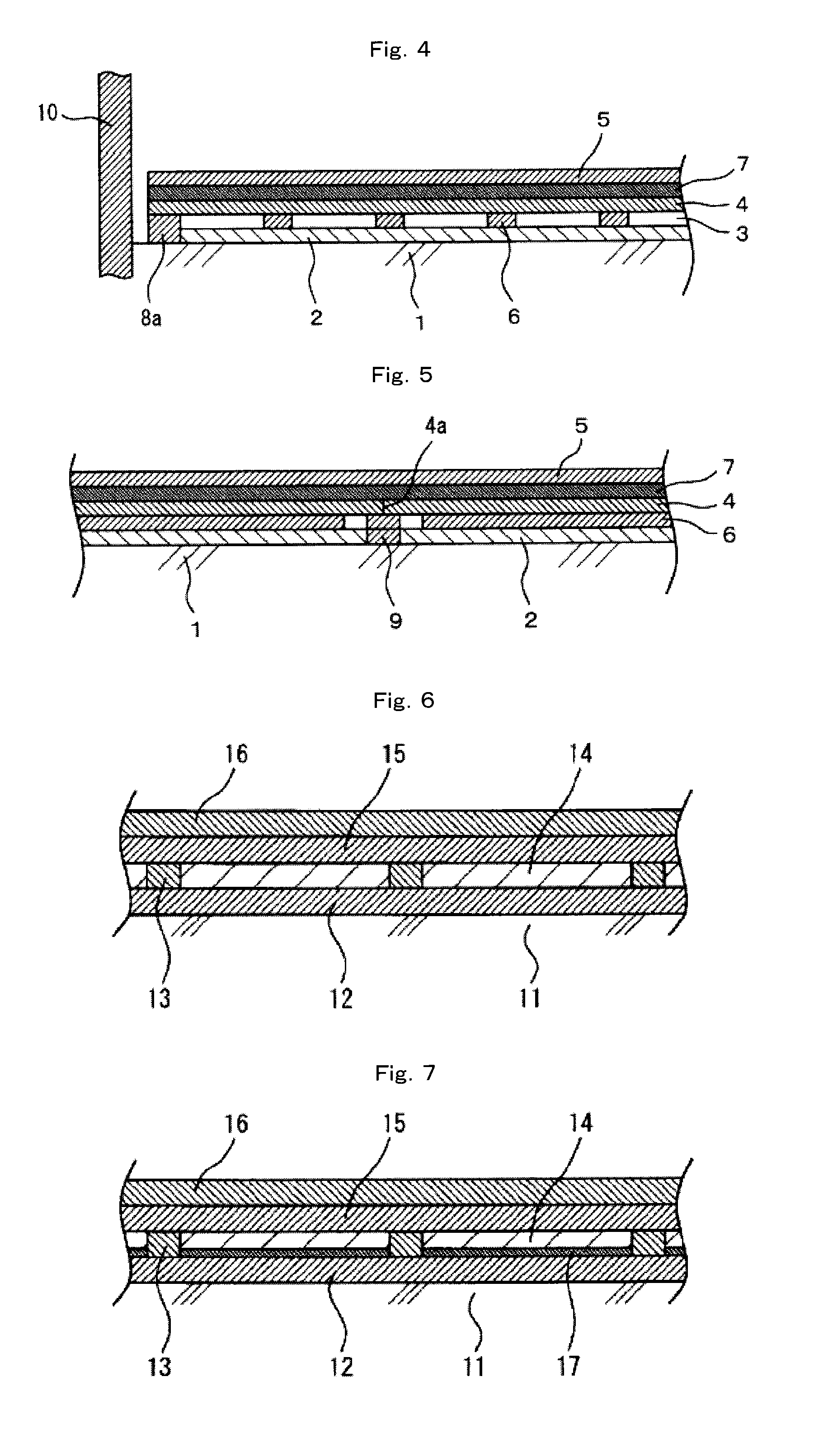Sound insulation floor structure and sound insulation floor component as well as method for reducing floor impact sound
a sound insulation floor and sound insulation floor technology, applied in the direction of shock-proofing, walls, flooring, etc., can solve the problems of local deformation of wood boards, subsidence of members, uncomfortable foot-step feeling, etc., to improve floor impact sound insulation, prevent floor structure subsidence, and improve the effect of sound insulation
- Summary
- Abstract
- Description
- Claims
- Application Information
AI Technical Summary
Benefits of technology
Problems solved by technology
Method used
Image
Examples
production example 1
of Buffer Member
[0215]A sheath-core form conjugated staple fiber (“Sofista” manufactured by Kuraray Co., Ltd., having a fineness of 3 dtex, a fiber length of 51 mm, a mass ratio of the sheath relative to the core of 50 / 50, a number of crimps of 21 / 25 mm, and a degree of crimp of 13.5%) was prepared as a thermal adhesive fiber under moisture. The core component of the conjugated staple fiber comprised a polyethylene terephthalate and the sheath component of the conjugated staple fiber comprised an ethylene-vinyl alcohol copolymer (the content of ethylene was 44 mol % and the degree of saponification was 98.4 mol %).
[0216]Using the sheath-core form conjugated staple fiber, a card web having a basis weight of about 50 g / m2 was prepared by a carding process. Then six sheets of the card webs were put in layers to give a card web having a total basic weight of about 300 g / m2.
[0217]The resulting card web was transferred to a belt conveyor equipped with a 50-mesh stainless-steel endless net...
production example 2
of Buffer Member
[0221]A nonwoven structure having a thickness of 12 mm was produced in the same manner as in Production example 1 of buffer member except that a card web having the number of stacked webs of 17 and a total basis weight of about 850 g / m2 was used and that the clearance (distance) between the upper and lower conveyor belts was adjusted appropriately. The obtained nonwoven structure had an apparent density of 0.07 g / cm3. The nonwoven structure had bonded fiber ratios of 11% at the surface area, 10% at the central area, and 10% at the backside area. The nonwoven structure was cut to give a buffer member 1.
production example 3
of Buffer Member
[0222]A nonwoven structure having a thickness of 3 mm was produced in the same manner as in Production example 1 of buffer member except that a card web having the number of stacked webs of 12 and a total basis weight of about 600 g / m2 was used and that the clearance (distance) between the upper and lower conveyor belts was adjusted appropriately. The obtained nonwoven structure had an apparent density of 0.2 g / cm3. The nonwoven structure had bonded fiber ratios of 73% at the surface area, 70% at the central area, and 74% at the backside area. The nonwoven structure was cut to give a buffer member 3.
PUM
 Login to View More
Login to View More Abstract
Description
Claims
Application Information
 Login to View More
Login to View More - R&D
- Intellectual Property
- Life Sciences
- Materials
- Tech Scout
- Unparalleled Data Quality
- Higher Quality Content
- 60% Fewer Hallucinations
Browse by: Latest US Patents, China's latest patents, Technical Efficacy Thesaurus, Application Domain, Technology Topic, Popular Technical Reports.
© 2025 PatSnap. All rights reserved.Legal|Privacy policy|Modern Slavery Act Transparency Statement|Sitemap|About US| Contact US: help@patsnap.com



